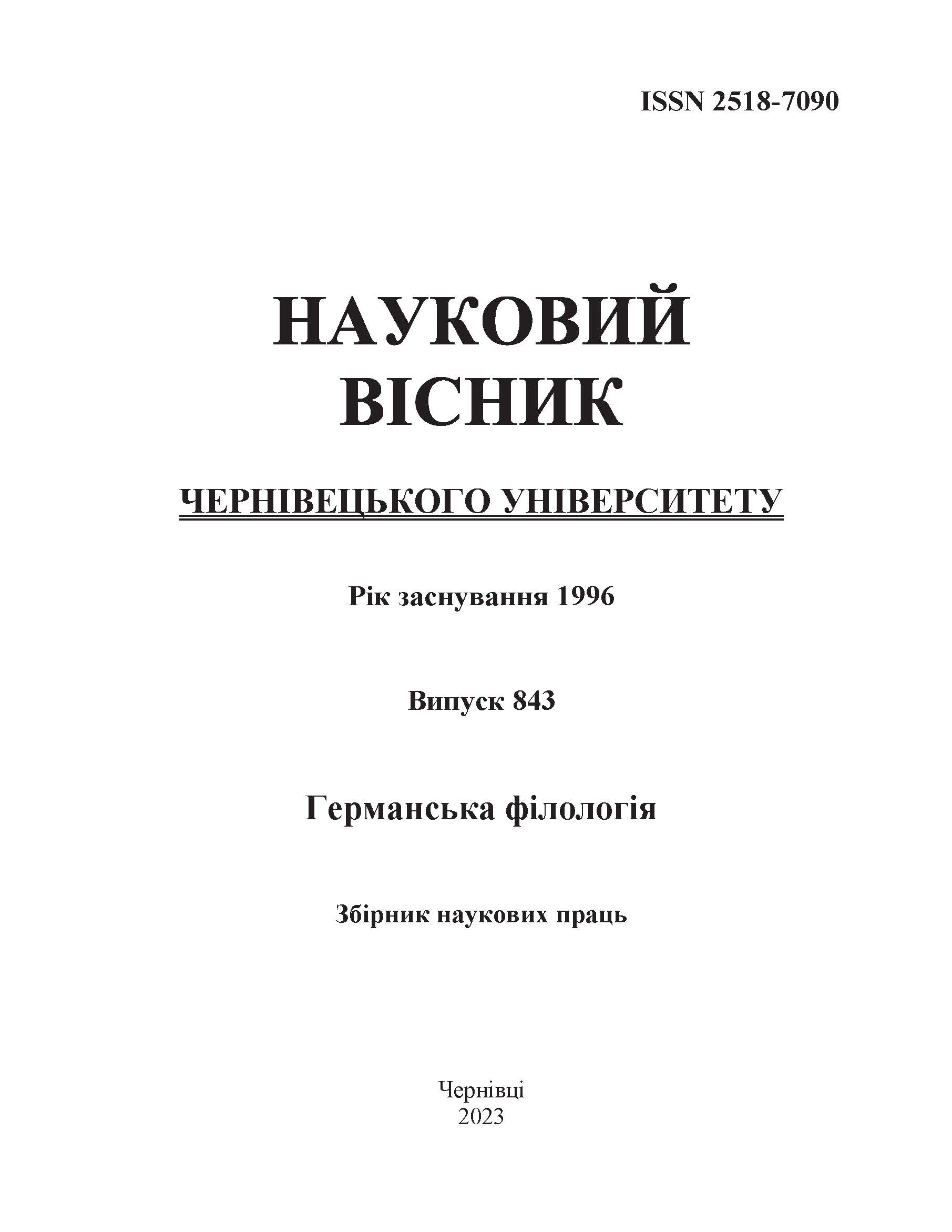НІМЕЦЬКІ ІМЕННІ КОМПОЗИТИ З ДІЄСЛІВНИМ КОМПОНЕНТОМ: СЕМАНТИКО-ПАРАДИГМАТИЧНИЙ АНАЛІЗ
DOI:
https://doi.org/10.31861/gph2023.843.75-84Ключові слова:
композити, дієслово-детермінант, ЛСП дієслів, словотвірна модель, стабільні зв’язки, парадигматичні відношенняАнотація
Як один із найбільш продуктивних шляхів поповнення словника, словоскладання у німецькій мові розуміється і тлумачиться як активний процес, що дозволяє не тільки створити нові позначення, а й уточнити наявні, висловити за допомогою однієї одиниці максимум значення. До таких одиниць належать композити з моделлю V + N, які ми розглянули на основі вибірки із трьох стилів (художнього, наукового та публіцистичного). Поєднання у дослідженні традиційних методів із квантитативними дозволяє говорити про більшу доказовість отриманих даних. Так, критерій хі-квадрат допомагає визначити наявність стабільного зв’язку між компонентами складної одиниці, коефіцієнт спряженості К показує його міру, а коефіцієнт кореляції r виявляє парадигматичні зв’язки.
У результаті проведеного дослідження встановлено, що ЛСП дієслів-детермінантів у аналізованих моделях характеризуються високою продуктивністю одиниць, на відміну від іменників-детермінатів, які тяжіють до кількісно великого наповнення підкласів. Таким чином, обмеженим, але активним інструментарієм означальних слів уточнюється, пояснюється, доповнюється значення головних слів. На рівні моделей стабільний зв’язок установлено для: ЛСП дієслів „Розташування” + ЛСП іменників „Будинки та споруди”, ЛСП дієслів „Звучання та комунікація” + ЛСП іменників „Мова, мовлення”. Водночас чи не найважливішими для аналізованої конструкції є дієслова ЛСП „Обробка предмету” та „Рух”: вони продемонстрували найбільшу кількість слововживань серед підкласів та сполучень у словотвірних моделях; у сполученні з ЛСП іменників у них зафіксовано стабільні зв’язки; кореляційний аналіз підтвердив тут також наявність парадигматичних зв’язків як між собою (найтісніший зв’язок), так і у складі більшого угруповання.







